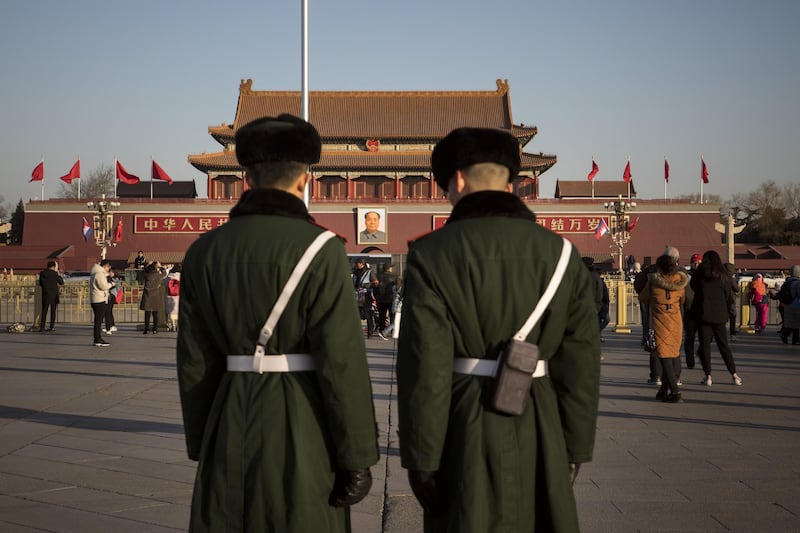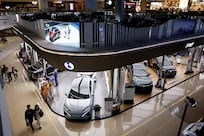As the People’s Republic of China prepares to celebrate the 70th anniversary of its founding later this year, the limits of its Communist Party-led model are becoming apparent. And more than ever, the world’s longest-surviving and most-powerful autocracy faces difficult choices at home and abroad.
By China’s own statistics, its economy is registering its most sluggish growth in nearly three decades. The world’s second-largest economy grew by 6.6 per cent in 2018, the lowest rate since 1990, when the fallout from the massacre of as many as 10,000 people in a tank and machine-gun assault on pro-democracy demonstrators in Beijing’s Tiananmen Square a year earlier kept growth to a humble 3.9 per cent.
At a time when China appears to have entered a new era of uncertainty after more than a quarter century of phenomenal growth, it is perhaps fitting that this year marks the 30th anniversary of that massacre.
The uncertainty is evident in a new phenomenon – the flight of capital from a country that, between 1994 and 2014, amassed towering piles of foreign-exchange reserves by enjoying a surplus in its overall balance of payments.
But now, faced with an unstoppable trend of net capital outflows, President Xi Jinping’s government has tightened exchange controls and other capital restrictions to prop up the country’s fragile financial system and sagging currency. The regime has used tens of billions of dollars in recent months alone to bolster the yuan’s international value.
It is not just capital that’s fleeing China, as more and more Chinese choose to live overseas. In an informal vote of no confidence in the Chinese system, more than a third of surveyed millionaires in China said they were “currently considering” migrating to another country. An earlier report found that almost two-thirds of rich Chinese were either emigrating or have plans to do so.
Today, China’s mounting internal challenges are being compounded by new external factors. Chinese belligerence and propaganda, for instance, have spawned a growing image problem for the country internationally, which is apparent even in regions where China has invested heavily, from Africa to Southeast Asia.
More significantly, Beijing has come under international pressure on several fronts – from its trade, investment and lending policies to its human rights record, including its incarceration of more than a million Muslims from Xinjiang, a sprawling territory Mao Zedong annexed in 1949. Perhaps China’s free ride, which helped propel its rise, is coming to an end.
In modern-day “re-education” prisons, China is accused of forcing Uighurs and other Muslim groups to forsake Islamic practices and become secular citizens.
The Soviet Communist Party that ran gulags was consigned to the dustbin of history. But now the Chinese Communist Party has set up its own gulags that are more high-tech and indiscriminate and have Islam as their target. The network of concentration camps is designed to dismantle Muslim identities and change the outlook of entire communities – a grim mission of unparalleled scale.
Yet, even as international criticism has mounted, the West still seems reluctant to hold Beijing accountable for its harsh treatment of ethnic minorities, deciding against, for instance, introducing sanctions.
China, meanwhile, is confronting growing US-led pressure on the trade and geopolitical fronts, accentuating Beijing’s dilemmas and fuelling uncertainty at home. As long as the US-China trade war rages, flight of capital will remain a problem for Beijing, whose foreign-exchange reserves have shrunk by about $1 trillion from their peak of just over $4 trillion in mid-2014.
At a time when China’s imperial project, the Belt and Road Initiative, is running into resistance from a growing number of partner countries, Beijing is also confronting an international pushback against its telecommunications giant Huawei. In fact, the pushback has broadened from opposition to Huawei’s participation in next-generation 5G wireless networks to a broader effort in Europe, North America and Australia to restrict the use of Chinese technology because of concerns that it is being used for espionage.
The arrest of the Huawei founder’s daughter in Canada, at the behest of Washington, rattled China’s elites, making them angry but also fearful that any one of them could meet a similar fate while travelling to the West. With Meng Wanzhou’s detention, the US signalled that it has more powerful non-tariff weapons than China, which has long used such tools to punish countries as diverse as Japan, Mongolia, South Korea and the Philippines.
Ms Meng was held for an alleged violation of America’s Iran-related sanctions, but even Western onlookers saw her arrest as an example of US high-handedness. Instead of galvanising support against the American move, China responded in typical fashion that, as an American analyst put it, is the “mark of a thuggish state” – by jailing two Canadians.
Indeed, it is Beijing’s open disregard for international rules that explains why it can count on few true strategic allies or reliable security partners. Contrast this with the strong network the US maintains, including close collaboration with many of China’s neighbours. Beijing has alienated almost every significant power in the Indo-Pacific and beyond.
China’s lonely rise could become more pronounced with the newly restructured People’s Liberation Army becoming less of an army and more of a power projection force, the majority of whose troops now are not from the army but from the other services. Indeed, the PLA’s shift away from being a defensive force foreshadows a more aggressive Chinese military approach of the kind already witnessed in the South China Sea, where China has fundamentally changed the status quo in its favour.
The Dalai Lama recently said that, due to Chinese pressure, no Buddhist country, with the sole exception of the nominally Buddhist Japan, is now willing to grant him entry as the exiled leader of Tibetan Buddhism. However, whenever Chinese pressure forces smaller nations to cave in on any issue, it only fuels greater resentment against Beijing.
Against this backdrop, where is China heading? It has come a long way since the Tiananmen Massacre, with its citizens now more prosperous, mobile and digitally connected. Its economy, in purchasing power parity terms, is already the world’s largest.
However, its political system remains as repressive as ever, with Mr Xi centralising power in a way China has not seen since Mao. Under his leadership, the party has set out to systematically quash Muslim, Tibetan and Mongol identities, expand China’s frontiers far out into international waters, and turn the country into a digital totalitarian state.
Yet, one should not overlook what a difference less than a year has made. Few in China dared to criticize Mr Xi when he ended the decades-old, Party-led collective leadership system and abolished a two-term limit on the presidency –actions that theoretically allow him to rule for life.
But, in the new international environment in which China finds itself today, he is facing domestic criticism – however muted — for building a cult of personality around his one-man rule and for inviting an international pushback by overemphasising China’s strength and power.
Mr Xi’s word may be law but, faced with difficult choices on China’s new challenges, he now finds himself under pressure. His primary focus will probably remain ensuring stability at home. Without stability, neither he nor the Party can hope to survive in power.
To calm the economic turbulence, China’s central bank has substantially increased domestic credit to help boost consumption and investment at home. In the medium-term, the US-led tariff pressures are likely to accelerate China’s shift from low-end manufacturing to higher value-added industries like electronics, robotics and artificial intelligence.
The geopolitical pushback, for its part, could force Xi to return to the “hide your capacities, bide your time” strategy of Deng Xiaoping. But such a return can scarcely obscure China’s ambitious goals that Mr Xi has laid bare. Even if Beijing starts soft-pedalling its ambitions, it is likely to adopt a “two steps forward, one step back” strategy to keep progressing toward its goals.
Brahma Chellaney is a geostrategist and the author of nine books, including the award-winning “Water, Peace, and War”





